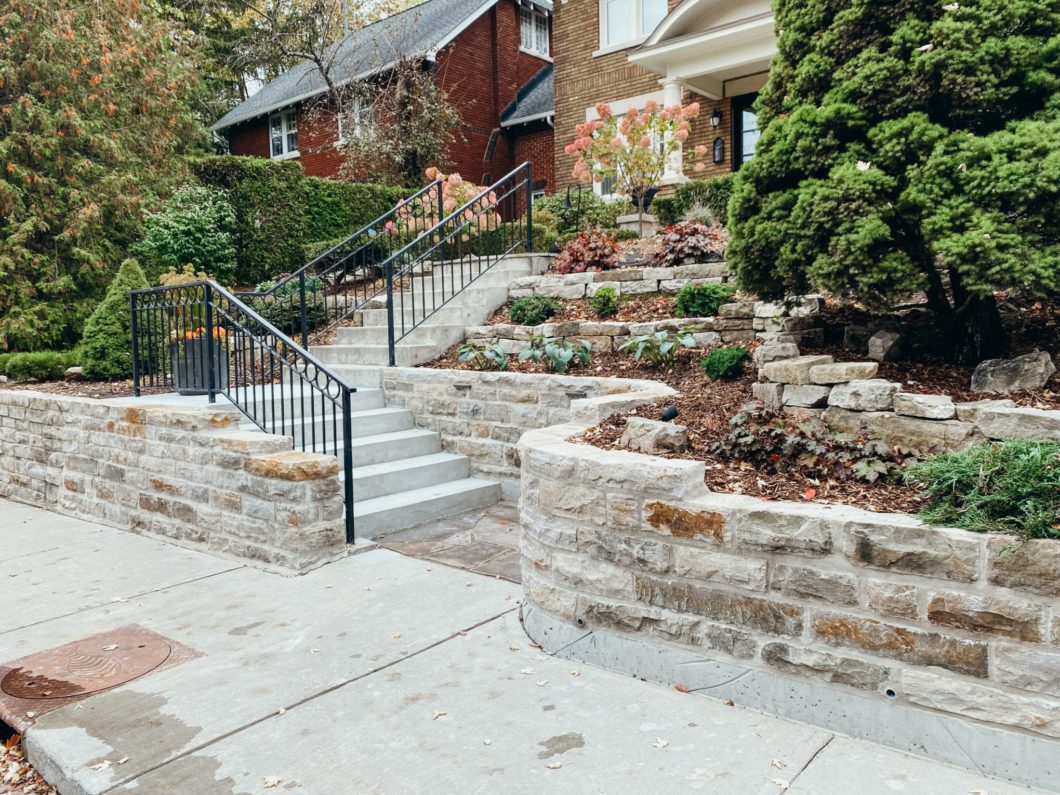Repointing
The Art of Repointing: Preserving Masonry One Joint at a Time Repointing is one of the most critical—and often overlooked—maintenance techniques in masonry restoration. Whether you’re working with brick, stone, …
Explore
Solid masonry construction is one of the oldest and most reliable building techniques in architectural history. From the ancient pyramids of Egypt to Ottawa’s own Parliament Buildings, solid masonry has been the foundation—literally—of enduring architecture. It’s a method admired not only for its durability but also for its beauty, strength, and timeless character.
Solid masonry refers to a construction technique in which walls, piers, or buttresses are built entirely from masonry units—typically brick or stone—without any internal voids or cavities. These walls are usually load-bearing, meaning they support the weight of the structure above them. In many cases, they also serve as the exterior cladding, weatherproofing, and interior finish all in one.
Unlike modern veneer construction, where a single layer of brick or stone is tied to a wood or steel frame, solid masonry walls are built entirely out of masonry, often multiple layers thick. In brick construction, these layers are referred to as wythes—a solid masonry brick wall might be two, three, or more wythes thick, depending on the building’s height and structural needs.
Solid masonry has been in use for thousands of years, and many of the world’s oldest surviving buildings—Roman aqueducts, medieval cathedrals, and ancient temples—owe their longevity to this time-tested method. In North America, this construction technique was widely adopted in the 18th and 19th centuries, particularly in civic architecture and heritage homes.
In fact, during the early 20th century, some skyscrapers were constructed using solid masonry walls that were up to 6 feet thick at the base, a necessity for supporting the massive weight of multi-storey structures before steel-frame construction became the norm. (Source: The American Skyscraper: 1850–1940 – A Celebration in Height)
Here in Ottawa, solid masonry construction was the dominant method for many historic buildings, especially in the late 1800s and early 1900s. Many of the city’s heritage buildings, including farmhouses, churches, civic buildings, and even the Parliament Buildings, were built using solid masonry stone techniques. In rural areas, you’ll often still find century-old stone farmhouses constructed with nothing more than local stone, lime mortar, and skilled hands.
This legacy is not just architectural—it’s cultural. Preserving these buildings is not just about maintaining structures, but about honouring the craftsmanship and permanence they represent.
Stone: Fieldstone, limestone, granite, and sandstone are common in heritage construction. Stone walls offer exceptional compressive strength and natural beauty.
Brick: Clay brick was widely used for its availability and ease of manufacture. Solid brick walls typically feature multiple wythes bonded together for added strength.
These materials are naturally fire-resistant, low-maintenance, and incredibly durable, making them ideal for long-term performance in harsh climates like Ottawa’s.
While modern construction has shifted toward lighter, faster, and cheaper methods, solid masonry continues to hold unique advantages:
Longevity: Properly maintained, a solid masonry building can last for hundreds of years.
Thermal Mass: Thick masonry walls help regulate interior temperatures, offering natural insulation benefits.
Strength: Solid masonry offers unmatched compressive strength, making it ideal for load-bearing applications.
Aesthetics: There’s no substitute for the timeless look of natural stone or traditional brickwork.
For homeowners, contractors, and preservationists alike, solid masonry represents not only quality but also a deeper connection to history and craftsmanship.
To keep solid masonry structures in top condition, routine maintenance is key:
Repointing mortar joints to prevent moisture intrusion
Repairing cracks or displacement caused by settling or freeze-thaw cycles
Applying appropriate waterproofing methods without damaging breathability
Inspecting for structural movement and addressing any shifting promptly
Partnering with experienced heritage masons ensures that repairs and restorations are performed using appropriate materials and traditional methods.
Solid masonry construction is a testament to architectural permanence. Its legacy is etched in stone and brick across cities like Ottawa, where it continues to define the character of our most cherished buildings. Whether you’re restoring a heritage farmhouse or simply curious about the techniques that shaped our skyline, solid masonry is a story of strength, tradition, and craftsmanship that still has much to offer.